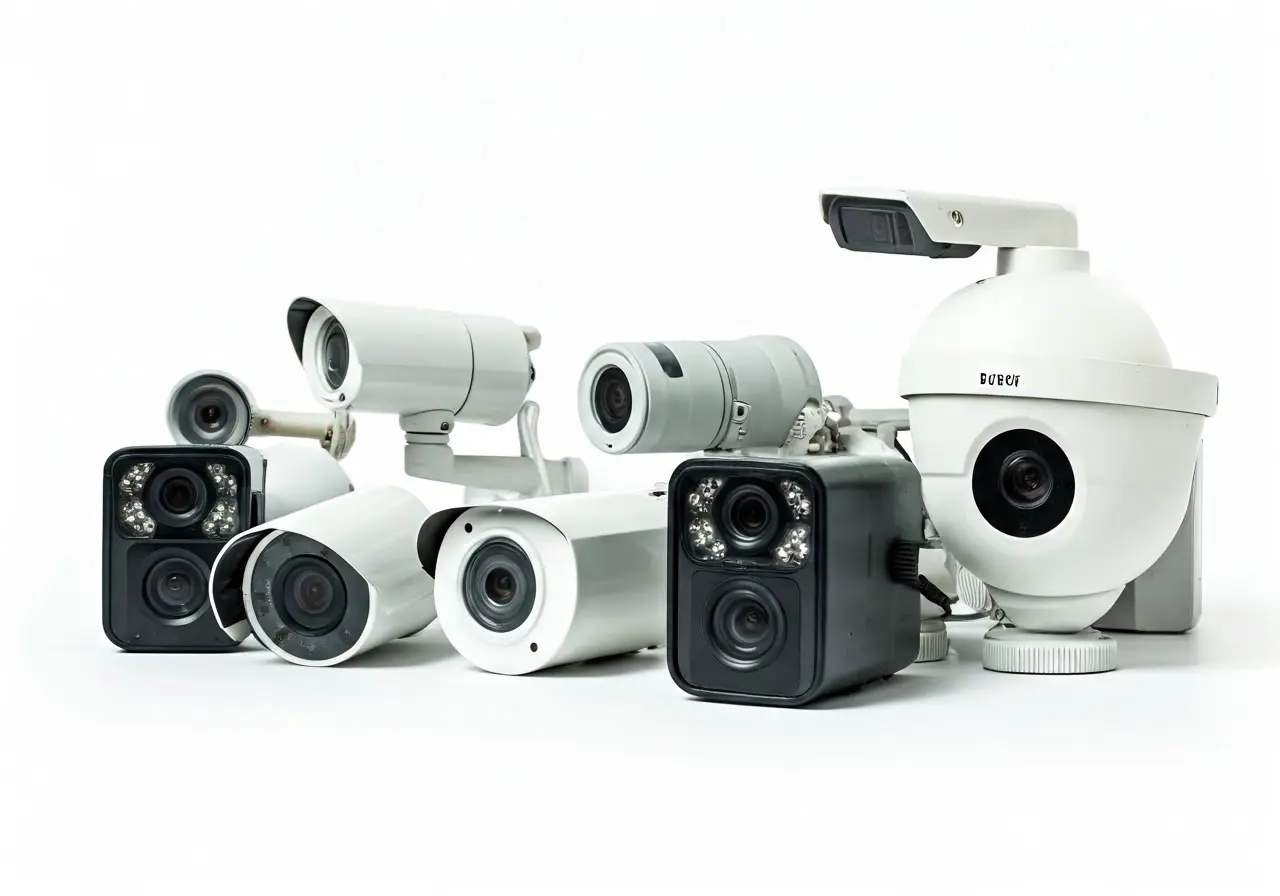7 Tips for Choosing the Right Surveillance Cameras
Choosing the right surveillance cameras can seem like a daunting task with the myriad of options available today. With just a little guidance, you can confidently choose the perfect solution for your needs. Let’s dive into some practical tips to help simplify your decision-making process.
1. Understanding Your Needs
Before jumping into the world of surveillance cameras, it’s critical to assess what you want to achieve. Whether it’s keeping an eye on your home or monitoring a business, identifying your primary objectives will guide your choice. For instance, are you looking to deter intruders, or do you need continuous monitoring of specific areas, such as front and back entrances? The specific needs might dictate whether you choose a smart indoor camera or more robust outdoor systems. In particular, focusing on key areas prone to unauthorized access ensures fewer blind spots while securing those that matter the most. By carefully weighing these factors, you can align features with objectives, thus ensuring maximum effectiveness and efficiency.
Additionally, consider the scale at which you want surveillance. A simple home setup might only require a few strategically placed cameras, whereas a business might need an array of interconnected devices covering multiple areas. This tailor-made approach helps in selecting cameras that adequately cater to both your expectations and your environmental demands.
2. Setting a Realistic Budget
Understanding how much you’re willing to spend will help narrow down your options. From basic models to advanced systems, your budget plays a key role in determining what’s available to you. It’s important to recognize that surveillance systems can vary widely in cost, often reflecting differences in features, video quality, and by extension, overall security coverage. Entry-level cameras might suffice for basic monitoring needs, but if you require advanced functionality like AI-based object recognition or comprehensive smart home integration, these might incur additional expenses. Armed with the knowledge of what you want versus what you can afford, you’ll navigate the purchasing process with clarity.
3. Knowing the Types of Cameras
There are various types of surveillance cameras, each designed for specific applications. Familiarize yourself with dome, bullet, and PTZ cameras to understand which might suit your needs best. Dome cameras, known for their sleek design, often find their place indoors due to their wide-angle capabilities. Conversely, bullet cameras are recognized for providing long-range viewing, making them perfect for outdoor surveillance. Meanwhile, PTZ cameras offer an added layer of flexibility, allowing users to pan, tilt, and zoom into live footage for a closer look. Understanding these camera types and their optimal uses will better equip you in making an informed decision that matches your surveillance goals.
In addition to traditional models, consider the emergence of new technologies like thermal cameras and AI-enhanced models. Thermal imaging can help detect unusual heat signatures, proving invaluable in low visibility conditions, while AI features can distinguish between trivial movements and genuine threats, reducing false alarms and ensuring pertinent alerts.
4. Evaluating Camera Features
Look for features like resolution, field of view, night vision, and motion detection. Understanding these elements helps ensure you’re getting a camera that meets your requirements. High-resolution cameras, typically 1080p or even 4K, offer crystal clear images that help you easily identify faces and license plates. A wide field of view can reduce the number of cameras needed, covering more ground with each unit. Night vision capabilities, on the other hand, are pivotal for monitoring activity in complete darkness, aiding in round-the-clock security without lapses.
Motion detection technology can significantly enhance the efficiency of your surveillance system. Cameras with smart alerts can distinguish between people, animals, and vehicular movement, only notifying you when specific thresholds are crossed. For instance, a system that only alerts you when unusual human activity is detected can save you from unnecessary distractions while ensuring you don’t miss important alerts.
5. Considering Installation Requirements
Not all cameras are easy to install. Consider whether you prefer a DIY setup or professional installation. This decision can impact both cost and convenience. Wired systems often require a professional to ensure stable installation and wiring, which can add to initial setup costs but offer a more consistent power supply. However, wireless cameras, which are increasingly popular, provide a versatile option for those who prefer simple, do-it-yourself installations. These systems can be repositioned with ease and are perfect for renters who may move frequently.
6. Exploring Connectivity Options
From wired to wireless, cloud-based to local storage, connectivity options determine how you access and manage footage. Choose an option that aligns with your technological comfort level. For instance, Wi-Fi-enabled cameras allow users to view real-time footage and receive notifications on their smartphones from anywhere with internet access. Conversely, local storage options ensure footage remains private and isn’t dependent on internet connectivity. Assessing these connectivity options ensures you’re prepared for varying circumstances and can adapt to any changes in your home or business environment.
7. Staying Updated on Technology Trends
Technology evolves rapidly, bringing new features and capabilities to the forefront. Staying informed about current trends can help future-proof your investment. Features like automatic updates and AI enhancements are quickly becoming standard, ensuring that your camera remains equipped to handle emerging threats while maintaining optimal performance. Furthermore, by integrating surveillance systems into broader smart home ecosystems, such as partnering with voice assistants and other IoT devices, users gain centralized control, simplifying security management and potentially unlocking new functionalities.

























































